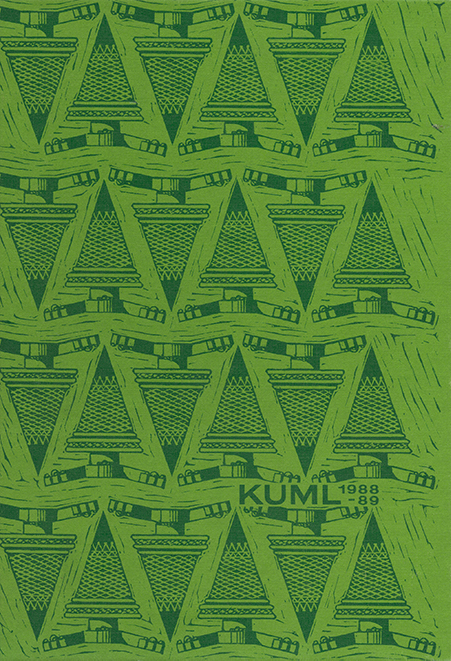Højgård, Avnevig and Måde. Three graves from Slesvig and Southern Jutland from the time around the birth of Christ
DOI:
https://doi.org/10.7146/kuml.v36i36.110931Keywords:
Højgård, avnevig, måde, slesvig, southern jutland, grave, pre-roman iron age, iron age, early iron ageAbstract
Højgård, Avnevig and Måde
Three graves from Slesvig and Southern Jutland from the time around the birth of Christ
Among the Danish fibulae from the late pre-Roman Iron Age there is a particular form with a broad, right-angled bow, which in most cases is finished at the spiral-end with three mouldings. These fibulae, made of bronze or iron, following the so-called middle La Téne or LT-II classification are often designated »Hanoverian« fibulae (fig. I). This type of fibula is known in only a very limited number of instances: 12 examples spread over 11 sites, all from the area of southern Jutland or Slesvig, with the exception of one from Vendsyssel (fig. 2). The fibulae from 9 of these sites have previously been discussed and presented in the archaeological literature (Jørgensen 1968, Hvass 1985, Vendsyssel Museum 1984-85).
The article highlights two hitherto unpublished grave-finds with »Hanoverian« fibulae, a weapon-grave from Højgård (fig. 2 no. 8) and an interment grave from Avnevig (fig. 2 no. 9), together with an urn-grave with other fibula-types from Måde near Esbjerg (fig. 2), since these finds show new facets of the late pre-Roman Iron Age; these in part concern the weapon-grave environment of that time, and are also connected with other burial customs and forms of burial.
The weapon grave from Højgård, in addition to the bronze fibula (fig. 5), contained a two-edged La Téne sword (figs. 4 and 7 A), with a wooden sheath ending in a bronze-plated chape (fig. 5), a spear-head (figs. 4 and 7B), and iron pieces of the shield-handle, rimfitting and centre-boss, with rod-like point (figs. 4 and 7C). These objects lay in an urn, about 40 cm in height, full-bellied, with a rough finish on the lower part and smooth undecorated upper part with a considerably thickened and facetted rim (fig. 4). In the urn there were also bronze pieces from two drinking horns -from the mouthpiece and fragments from the chains and end pieces (figs 8-9 and 18).
The interment grave from Avnevig (fig 10) was placed at the top of an alder mound, with a north-south orientation. The dead person had been placed with the head to the south and close nearby lay a bronze fibula (fig. 12). The grave also contained a broad-bladed iron sickle with a wooden handle (figs. 10:4 and 11), a razor (figs. 10:2 and 11) and an iron knife (fig. 11), along with three pottery vessels: a pot with handles (figs. 10:5 and 13), a footed beaker (figs. 10:6 and 13), and a small beaker (figs. 10:7 and 13).
The urn grave from Måde, which was placed at the edge of an alder burial mound, contained, in addition to cremated human bones, an iron knife with a distinctive handle (fig. 14) and an iron needle in a bone case (fig. 14) together with two fibulae, one of them typologically a late K-fibula and the other of type M (figs. 14 and 17). Above the urn there were cremated bones which came from a sheep and sherds from 4 pots which showed secondary firedamage (figs. 15 and 16).
As the three fibula-dated graves can be placed in the late pre-Roman period IIIb, it follows that the drinking horn pieces (figs. 8-9 and 18), from Højgård are the oldest Danish specimens so far found in graves (figs. 8-9 and 18). The drinking horn endpieces correspond exactly both in form and in dimensions to a find from Grossromstedt (Eichhorn 1927: 154, grave 1907,07) and thus belong to the group of late pre-Roman drinking horn mounts which are known in particular from the area west of the River Saale (Redlich 1977) and from the Oder-Warthe area (Dabrowska 1988) (fig. 19). It also follows from the dating of these graves that the grave from Avnevig (fig. 10) is the earliest known fibula-dated Danish interment grave which is contemporary with the last phase of the late pre-Roman weapongrave environment, period IIIb (Jørgensen 1968:79). In the succeeding phase, i.e. in the early Roman Iron Age, the interment grave custom gained a footing throughout large areas of the country and even became dominant or prevalent in certain areas -but not in southern Jutland. In that part of the country interment graves have so far only been found north of the line between the mouth of the Vidå and Genner Bay (fig. 21).
Erik Jørgensen
Haderslev Museum
Downloads
Published
How to Cite
Issue
Section
License
Fra og med årgang 2022 er artikler udgivet i Kuml med en licens fra Creative Commons (CC BY-NC-SA 4.0).
Alle tidligere årgange af tidsskriftet er ikke udgivet med en licens fra Creative Commons.


